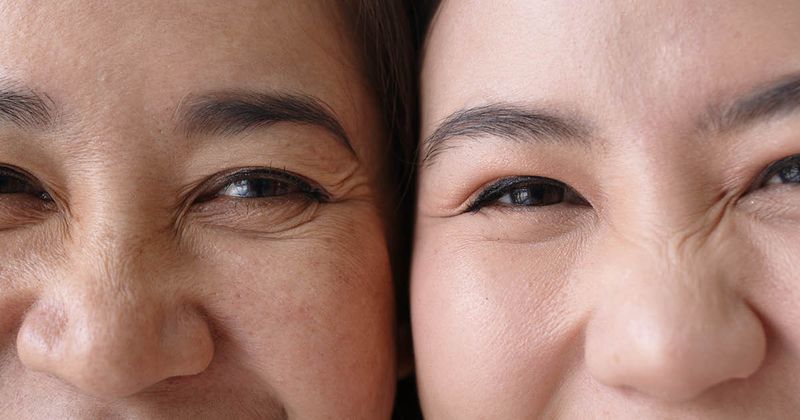Q&A: Year-round takeaways from Women’s Eye Health and Safety Month
April was Women’s Eye Health and Safety Month, but raising awareness and educating female patients about conditions that predominantly affect women is something eye care providers should prioritize year-round.
According to the nonprofit organization Prevent Blindness, there are 112 million more women than men living with vision loss globally, and women have a higher prevalence of age-related macular degeneration, dry eye disease, glaucoma, refractive error and thyroid eye disease. Women who are perimenopausal or in menopause also may experience vision changes, including dry eye, which occurs at double the rate in postmenopausal women.

“Due to a variety of issues, data continue to show that women face significant barriers to vision and eye health care not only in the United States, but around the world,” Kira Baldonado, vice president of public health and policy at Prevent Blindness, said in recent organization press release. “By providing women the necessary information they need and access to resources for quality vision care, we can help put an end to preventable vision loss and blindness.”
Healio spoke with Kathryn Johnson, OD, assistant clinical professor at the Herbert Wertheim School of Optometry & Vision Science at the University of California, Berkeley, about common eye health concerns for women and what optometrists should discuss with their female patients.
Healio: Are certain eye diseases more common in women than men?
Johnson: Women are more prone to certain types of uveitis, or inflammation of the eye, likely because women are more prone to autoimmune disease (Yeung IY, et al.). Women are also more prone to normal-tension glaucoma, where there is progressive eye disease of the optic nerve and nerve fiber layer even though eye pressure is on the lower or “normal” side. Normal-tension glaucoma is not very well understood but is more prevalent among individuals with lower blood pressure. Women usually average lower blood pressure than men.
Healio: What misconceptions might eye care providers have about female patients?
Johnson: Where we practice, many women work in technology and other STEM careers and can therefore have just as much computer use as men, if not more. Eye care practitioners should always ask patients what they do for a living and what their visual needs are on the job.
Healio: Are there specific things clinicians should be aware of when treating pregnant or postpartum patients?
Johnson: ECPs should always ask premenopausal women if they are pregnant or nursing. There are varying philosophies on examining pregnant or nursing women, but I never use any sort of dilating drops for a routine exam in this population unless I believe their vision is at risk. For nursing women, if I feel that a dilated exam is important, I will discuss “pumping and dumping” ahead of time.
For a more acute issue, like an eye infection, practitioners need to use a category A drug for treatment whenever possible, which is defined by the FDA as drugs that have had “adequate, well-controlled studies in pregnant women” and have not shown “an increased risk of fetal abnormalities.”
Healio: What should clinicians be aware of when treating patients in perimenopause or menopause?
Johnson: ECPs should absolutely be mindful of dry eye disease during and after menopause. Changes in hormones at this time of life are associated with dry eye symptoms.
Healio: What about eye safety when applying makeup?
Johnson: Patients should never have permanent or “tattoo” eyeliner applied to their upper or lower eyelids. This procedure permanently damages the meibomian glands within the lids, which are key to a healthy tear layer. When they are damaged, women will experience significant dry eye.
I also recommend replacing all eye makeup within 3 to 6 months and to immediately dispose of any makeup that is used when an eye infection develops. Patients also shouldn’t share eye makeup products with anyone or they could be sharing an eye infection. Finally, for those who are sensitive to makeup, I recommend a hypoallergenic product.
Healio: Is there anything else you’d like to add?
Kelly: I know a lot of women who take care of others around them before they take care of themselves. I will see someone’s children for years before they decide to make an appointment for themselves. Encourage the women in your life to get a comprehensive eye exam every year.
References:
- Prevent Blindness provides free resources as part of April’s Women’s Eye Health and Safety Month to educate women on necessary steps to help save sight. https://preventblindness.org/2024-womens-eye-health/. Published March 27, 2024. Accessed May 15, 2024.
- Yeung IY, et al. Int Ophthalmol Clin. 2015;doi:10.1097/IIO.0000000000000072.
For more information:
Kathryn Johnson, OD, is an assistant clinical professor at the Herbert Wertheim School of Optometry & Vision Science at the University of California, Berkeley.
